
Particles
metrics 2024
Bridging Gaps in Physics with Open Access Insights.
Introduction
Particles is an esteemed open access journal published by MDPI, focusing on the dynamic fields of astronomy, astrophysics, and nuclear and high energy physics. Since its inception in 2019, the journal has made significant strides in contributing to scholarly discourse, achieving a commendable ranking in the Q2 category for its relevant fields as of 2023. With a commitment to disseminating high-quality research, it offers unrestricted access to a global audience, fostering collaboration and knowledge exchange among researchers, professionals, and students. Located in Basel, Switzerland, Particles serves as a platform for innovative research and discussions that leverage the latest advances in physics. Its current Scopus rankings underscore its impact and relevance, with notable positions in various categories within Physics and Astronomy. Through its rigorous peer-review process and diverse publication options, Particles continues to carve a niche in the academic landscape, catering to a growing community engaged in pioneering exploration of fundamental particles and cosmic phenomena.
Metrics 2024
 -
- 1.70
1.70 1.60
1.60 -
-Metrics History
Rank 2024
IF (Web Of Science)
JCI (Web Of Science)
Quartile History
Similar Journals
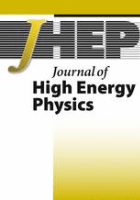
JOURNAL OF HIGH ENERGY PHYSICS
Exploring the dynamics of the universe through high energy physics.JOURNAL OF HIGH ENERGY PHYSICS, published by SPRINGER, stands at the forefront of research in the fields of nuclear and high energy physics. With an impressive impact factor and a Scopus ranking of #5 out of 87 in its category, it sits comfortably in the 94th percentile of academic journals worldwide. Since its inception in 1997 and transitioning to Open Access in 2014, the journal has committed itself to the dissemination of peer-reviewed, cutting-edge research that fosters collaboration and innovation across the global scientific community. Located in Germany and reaching audiences worldwide, the journal aims to provide a platform for scholars and researchers to share their findings, thus propelling advancements in theoretical and experimental physics. As it converges into 2024, the JOURNAL OF HIGH ENERGY PHYSICS continues to be an essential resource for anyone engaged in this dynamic field of study.
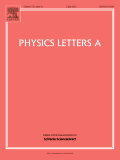
PHYSICS LETTERS A
Illuminating Discoveries in Physics and AstronomyPhysics Letters A is a renowned scientific journal published by Elsevier, dedicated to the field of physics and astronomy. Established in 1963, it has continuously evolved, offering a platform for the swift dissemination of significant research findings in various branches of physics. As of 2023, it holds a commendable Q2 ranking in the category of Physics and Astronomy (miscellaneous) and ranks 69th out of 243 journals in the same domain according to Scopus, positioning itself in the 71st percentile of academic impact. With its comprehensive scope, Physics Letters A provides a vital resource for researchers, professionals, and students, facilitating academic discourse and advancing knowledge across the field. Although it does not currently offer Open Access options, its rigorous peer-review process ensures high-quality content. It is centrally located in Amsterdam, Netherlands, and continues to be an essential outlet for innovative contributions to the physics community through the year 2024 and beyond.
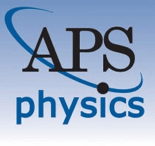
PHYSICAL REVIEW D
Driving Innovation in Nuclear and High Energy ResearchPHYSICAL REVIEW D, published by the American Physical Society, is a premier journal dedicated to the rapid dissemination of significant research findings in the fields of Nuclear and High Energy Physics as well as Physics and Astronomy. With an impressive Impact Factor and a prestigious Q1 ranking in 2023, it stands as one of the leading journals in its domain, with a Scopus ranking of #6 out of 87 in its category, placing it in the 93rd percentile. The journal welcomes rigorous theoretical and experimental studies that advance understandings in particle physics, cosmology, and quantum field theory. Although it does not provide open access, researchers gain a significant platform to reach a global audience and contribute to the ongoing discourse within the scientific community. Published regularly since its convergence starting in 1989, it remains essential for both emerging and established scholars looking to stay at the forefront of high-energy and nuclear physics research.
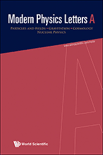
MODERN PHYSICS LETTERS A
Pioneering Discoveries in Modern PhysicsMODERN PHYSICS LETTERS A, published by World Scientific Publishing Co Pte Ltd, is a distinguished journal in the field of physics that serves as a pivotal platform for researchers, professionals, and students alike. With ISSN 0217-7323 and E-ISSN 1793-6632, the journal has gained international acclaim for its contributions to Astronomy and Astrophysics as well as Nuclear and High Energy Physics. The journal is ranked in Q3 for both Astronomy and Astrophysics and Nuclear and High Energy Physics, showcasing its relevance in these areas, while also achieving a Q2 ranking in the broader category of Physics and Astronomy (miscellaneous). Spanning from 1996 to 2024, MODERN PHYSICS LETTERS A promotes open dialogue and dissemination of pioneering research findings and innovative theories. While the journal operates without an open access option, its rich content is easily accessible through various academic databases, ensuring that vital research is shared widely among the scientific community. Situated in Singapore, this journal plays an essential role in the continuous advancement of the physics discipline, fostering collaboration and knowledge sharing among global researchers.
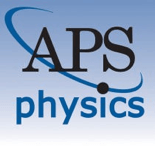
PHYSICAL REVIEW C
Defining Excellence in Nuclear Physics ScholarshipPHYSICAL REVIEW C is an esteemed journal published by the American Physical Society, dedicated to advancing knowledge in the fields of nuclear and high-energy physics. With a proud ISSN of 2469-9985 and an E-ISSN of 2469-9993, it has established itself as a leading journal, currently ranked in the Q1 category for its field in 2023, positioning itself in the top tier of scholarly publications. Based in the heart of the United States, at One Physics Ellipse, College Park, MD, PHYSICAL REVIEW C is known for its rigorous peer-review process and is a vital platform for researchers to share their pioneering findings. As part of a prestigious lineup backed by an impressive impact factor, this journal garners significant attention, reflected in its Scopus ranking as #18 out of 87 in the Nuclear and High Energy Physics category, placing it within the 79th percentile. While it currently does not offer open access options, it remains an essential resource for professionals and students seeking to deepen their understanding of nuclear interactions, reaction dynamics, and the fundamental principles governing subatomic particles. The convergence of innovative research from 2016 to 2024 makes it a timely reservoir for groundbreaking studies, thus reinforcing its importance in the scientific community.
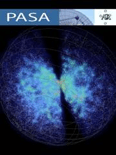
PUBLICATIONS OF THE ASTRONOMICAL SOCIETY OF AUSTRALIA
Illuminating the Universe Through Scholarly Excellence.Publications of the Astronomical Society of Australia, published by Cambridge University Press, stands as a distinguished platform for advancing knowledge in the realms of Astronomy, Astrophysics, Space, and Planetary Science. Hemmed in the United Kingdom, this journal is recognized for its outstanding contributions, reflected in its status as a Q1 journal in both Astronomy and Astrophysics, along with Space and Planetary Science categories as of 2023. With a solid impact factor, it ranks impressively at #23 within its Scopus category, firmly placing it in the competitive 75th percentile. This publication facilitates open discourse and innovative research from its inception in 1996 to the present year of 2024, providing an essential resource for researchers, professionals, and students eager to deepen their understanding of cosmic phenomena. By embracing rigorous peer-review standards and a commitment to scholarly excellence, the journal not only contributes to the scientific community but also fosters the next generation of astronomical research.
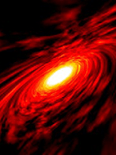
Annual Review of Nuclear and Particle Science
Pioneering Insights in High-Energy PhysicsAnnual Review of Nuclear and Particle Science is a prestigious journal published by Annual Reviews, focused on the fields of nuclear and high-energy physics. With an impressive impact factor that reflects its authority and influence—ranked Q1 in its category and holding a commendable Scopus rank of #2 out of 87, placing it in the 98th percentile—the journal serves as an essential resource for researchers, professionals, and advanced students alike. Covering pivotal developments and comprehensive reviews in nuclear and particle physics since its inception in 1978, this journal offers unparalleled insights into cutting-edge research and theoretical advancements. While it is not open access, the value of its scholarly content is evidenced by its rigorous peer-review process and its role in shaping contemporary discourse within the scientific community. With contributions from leading experts and a commitment to disseminating foundational and emerging theories, the Annual Review of Nuclear and Particle Science is indispensable for those seeking a deep understanding of the complexities in these dynamic fields.
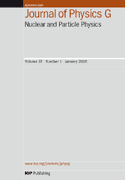
JOURNAL OF PHYSICS G-NUCLEAR AND PARTICLE PHYSICS
Advancing the Frontiers of Nuclear and Particle PhysicsJOURNAL OF PHYSICS G-NUCLEAR AND PARTICLE PHYSICS, published by IOP Publishing Ltd, stands as a premier journal in the realm of Nuclear and High Energy Physics. With an established presence since 1989 and currently converging toward 2024, this influential journal emphasizes groundbreaking research and discoveries in particle physics, fostering the dissemination of knowledge among a global audience of researchers, professionals, and students. Recognized for its high-quality publications, it holds a Q1 ranking in its category for 2023, placing it at an impressive 87th percentile among 87 journals in its field as per Scopus Rankings. The journal's impact is reflected in its esteemed reputation, making it an essential resource for advancing the frontiers of physics. Although it currently does not operate under an open access model, the journal ensures that subscribers receive comprehensive insights into the latest developments and theoretical advances that shape our understanding of the universe.

PHYSICAL REVIEW LETTERS
Exploring the Depths of Physical Science ExcellencePhysical Review Letters, published by the American Physical Society, is a premier journal in the field of Physics and Astronomy renowned for its rapid dissemination of high-impact research findings. With a distinguished history dating back to 1958 and an impressive ranking of #13 out of 243 in the general physics category, it stands proudly within the Q1 quartile, placing it in the top 6% of journals in its field. The journal focuses on brief reports of significant fundamental research across all areas of physics, making it an essential resource for researchers, professionals, and students seeking to stay at the forefront of developments in their field. Although Physical Review Letters does not offer open access options, its rigorous peer-review process ensures a high standard of quality and relevance in its published articles. With an unwavering commitment to advancing the understanding of physical science, this journal is indispensable for those looking to make a genuine impact in their research endeavors.
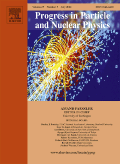
PROGRESS IN PARTICLE AND NUCLEAR PHYSICS
Connecting Researchers through Groundbreaking InsightsPROGRESS IN PARTICLE AND NUCLEAR PHYSICS is a prestigious academic journal published by Elsevier, focusing on the dynamic fields of particle and nuclear physics. Established in 1978 and continuing through 2024, this journal is recognized for its significant contributions to the scientific community, holding a Q1 ranking in Nuclear and High Energy Physics and topping the Scopus ranking in its category. With an impactful platform that encourages the dissemination of groundbreaking research, it attracts a diverse readership of researchers, professionals, and students eager to explore the latest advances in these fields. The journal is headquartered in Amsterdam, Netherlands, and provides an essential resource for those seeking to understand complex phenomena in particle and nuclear science. Although it does not offer Open Access options, it continues to uphold a reputation of excellence and rigor, making it a vital source of information in its domain.